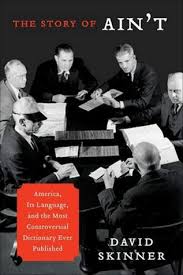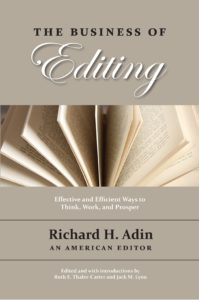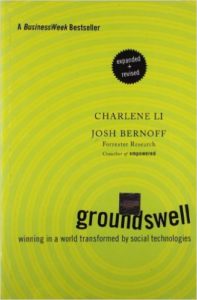How to Look into the Future
 An IRI report issued in November 2013 envisions the state of R&D in 2038 by using this process:
An IRI report issued in November 2013 envisions the state of R&D in 2038 by using this process:
Step 1: Look at existing trends. In our case, what are current leaders in the world of publishing forecasting?
Step 2: Seek out “weak signals” or trends-to-be. Will scientists, engineers, and physicians continue, increase, or decrease their use of social media? One recent study reported that 14% of physicians use social media daily to connect with colleagues or research patients’ symptoms.
Step 3: Develop a scenario, then “backcast”. Backcasting is like setting up a production schedule. Start with the print or release date and work your way backward, determining what needs to be done and when to get you to that point.
Adapted from FastCompany, November 2013.
Best Apps for Finding New Literature
ElectricLit: A mobile version of ElectricLiterature.com, a digital literary magazine with new and back issues available for iOS and Kindle. $5/issue.
McSweeney: Tracks new multimedia content each week from its publications, such as McSweeney’s Quarterly and the book magazine The Believer. For iOS; $3/month.
Storyville: “Keeps it simple: one story each week.” Receive material from mainstream and small presses. $5 for 6 months on iOS; $1.50/month for Kindle.
Info source: Nylon.
Become a Mentor
Feeling ready to share your experience, wisdom, and compassion? There are more than 5,000 programs for young people at mentoring.org, where you can search by age group and ZIP code. Connect with college students who want to learn job skills. Explore museums with high-school students who have just immigrated to the United States . . . or even be an e-mentor! Adapted from (Why not?) Woman’s Day, January 2014.
My Reading List
Would you like to share your professional reading list? If so, please send me an e-mail at MCSone@verizon.net.
What I Just Read
 The Story of Ain’t: America, Its Language, and the Most Controversial Dictionary Ever Published, by David Skinner. HarperCollins, 2012. This book relates the story of how Webster’s Third New International Dictionary broke with tradition and added thousands of new words and eliminated “artificial notions of correctne ss, basing proper usage on how language was actually spoken”. If you enjoy publishing history, you’ll find this book an interesting read.
The Story of Ain’t: America, Its Language, and the Most Controversial Dictionary Ever Published, by David Skinner. HarperCollins, 2012. This book relates the story of how Webster’s Third New International Dictionary broke with tradition and added thousands of new words and eliminated “artificial notions of correctne ss, basing proper usage on how language was actually spoken”. If you enjoy publishing history, you’ll find this book an interesting read.
What I’m Reading Now
 The Business of Editing: Effective and Efficient Ways to Think, Work, and Prosper, by Richard H. Adin. Waking Lion Press, 2014. I’ve selected this as a required text for my graduate course this coming semester and now am carefully picking out Adin’s best in the 421 pages (not counting the extremely well-done 14-page index) that cover editing from top to bottom. P.S.: This is an excellent resource for all types of editing professionals with great advice for those deciding to freelance.
The Business of Editing: Effective and Efficient Ways to Think, Work, and Prosper, by Richard H. Adin. Waking Lion Press, 2014. I’ve selected this as a required text for my graduate course this coming semester and now am carefully picking out Adin’s best in the 421 pages (not counting the extremely well-done 14-page index) that cover editing from top to bottom. P.S.: This is an excellent resource for all types of editing professionals with great advice for those deciding to freelance.
What I’m Reading Next
 Groundswell: W i n n i n g in a World Transformed by Social Tech no logies, by Charlene Li and Josh B e r n o f f , F o r r e s t e r R e s e a r c h . Harvard Business Review Press, 2011. I’m an HBR junkie, so it’s not surprising that I have a pile of its books “to be read” at any given time. Groundswell has been cited as “one of the most useful primers on the surge in social media” in many favorable reviews; as we all know, social media are here to stay. Trying my best to keep up, I also intend to follow the Groundswell blog and take advantage of other resources available at www.forrester.com/groundswell. Join me in this read, and send your thoughts to MCSone@verizon.net.
Groundswell: W i n n i n g in a World Transformed by Social Tech no logies, by Charlene Li and Josh B e r n o f f , F o r r e s t e r R e s e a r c h . Harvard Business Review Press, 2011. I’m an HBR junkie, so it’s not surprising that I have a pile of its books “to be read” at any given time. Groundswell has been cited as “one of the most useful primers on the surge in social media” in many favorable reviews; as we all know, social media are here to stay. Trying my best to keep up, I also intend to follow the Groundswell blog and take advantage of other resources available at www.forrester.com/groundswell. Join me in this read, and send your thoughts to MCSone@verizon.net.
